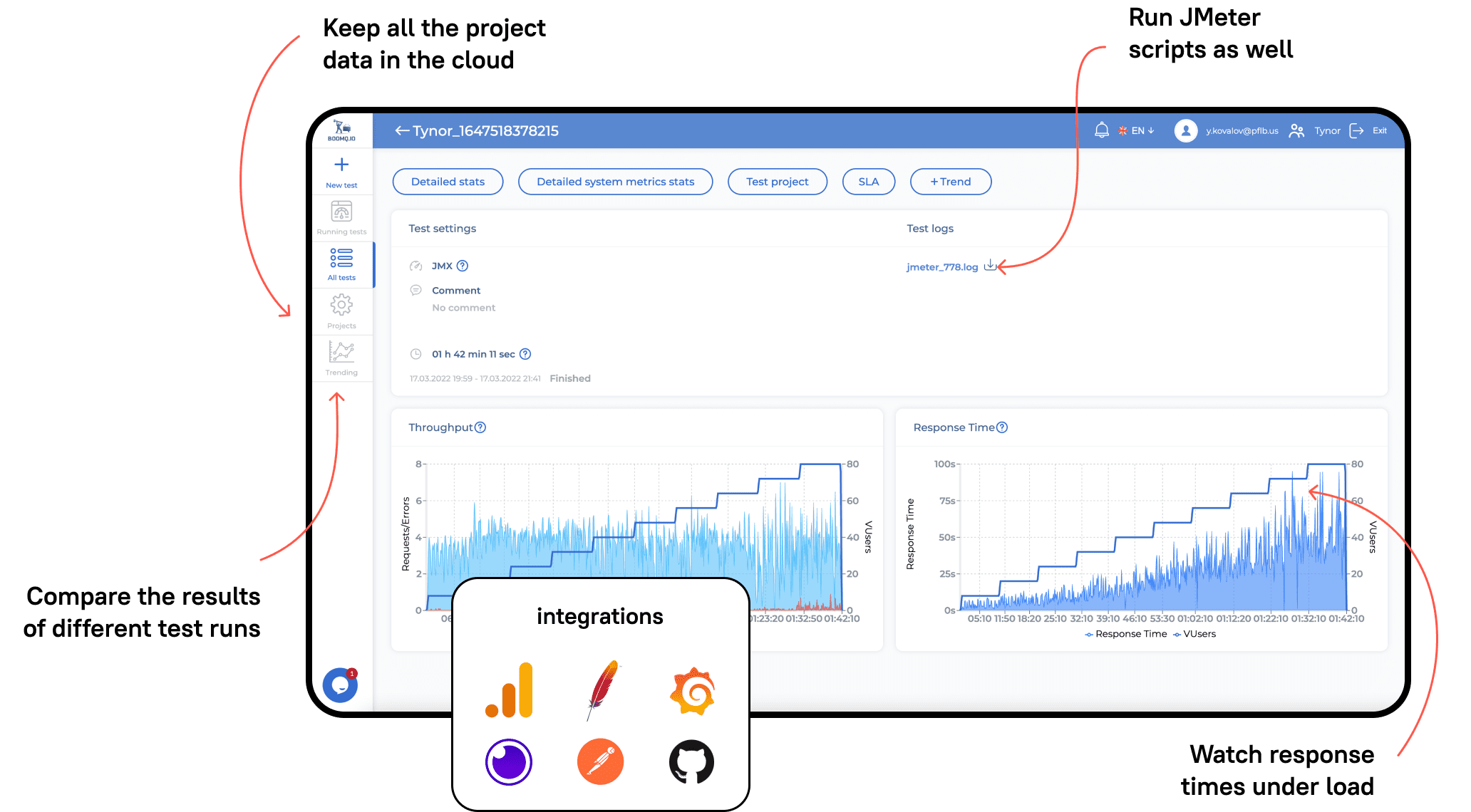Nobody wants to lose face when launching their website or app, or lose profits because of slowdowns in peak hours, right? Still, many companies keep putting off testing their systems, or don’t test them whatsoever. But why?
One of the main reasons is a widespread misbelief that testing your system is rather expensive. In some cases it is not cheap, indeed, say, when you want to test a complex system in a short time before release. But such situations are rather an exception than a rule: much more often, system performance testing requires a very moderate budget, while offering an opportunity to save money! How? Read further, and find out!
Use Agile
Agile methodology of software development applies to performance testing. Traditional testing on the final stage of development can and should be replaced by a processual approach, in which performance is tested on every stage of product development. There are three most important levels of performance testing that can be implemented in Agile development:
Focus on the Essentials
Testing the performance of each and every website or application component is always useful, but in case your budget is very limited, you can test the most important modules only. You will have to prioritize, since according to the Pareto principle, you can mitigate roughly 80% of the risks by testing only 20% of the product. This selective testing not only ensures system reliability but also allows you to effectively manage error budgets in your projects. By doing so, you can avoid long and expensive full-scale system tests while focusing on system-critical functions.
When choosing which particular parts of the system will undergo such a selective testing, focus on the ones which are supposed to take the heaviest load, i.e., the functions which will be most popular among the majority of users. Catalog search, adding items to the basket, and checking out can be the ones you are looking for in e-commerce. High frame rate, low ping and in-game purchases will be crucial for online games, and the insurance company will probably have to focus on the calculation of the cost of products. This is also where scalability testing comes into play, ensuring your system can handle growth and peak loads efficiently.
Using the best load testing tools can help simulate realistic traffic and pinpoint exactly where to direct your efforts, whether it’s catalog search, checkout flows, or in-game transactions.
Automate it
Automating your performance testing processes may sound like an unnecessary expense since test automation tools are costly. But if you focus on the fields where automation is most effective, you can, quite surprisingly, save your funds! First and foremost, we mean test automation on the level of API: this way, they are quicker to run and yield better results than scripts that are run on the level of user interface. Learning how to improve API performance can further optimize these automated tests, providing even greater time and cost savings in your testing process.
Automation of performance testing is a time- and money-consuming investment. It does not bring any quick financial benefits because of the initial costs, but its greater reliability and lower cost of each transaction than in manual testing makes it profitable in the long run.
Choose the right tools
There are dozens of performance testing tools on the market, some of them even free or open-source. It seems like all the opportunities to save money are there for you, but don’t rush to conclusions! Some of the free tools are, indeed, reliable and effective, but saving on the initial cost can be outweighed by high costs of implementing them and training your staff. Many enterprises opt for established solutions like LoadRunner or NeoLoad for load testing when they need robust capabilities and comprehensive support. If you’re considering K6 for testing, you might want to explore a Top 6 K6 Alternatives Overview to find the tool that best fits your specific requirements and resource constraints.
Open-source systems often require additional effort to be launched and tuned. They may lack a decent support service or a user-friendly interface, too. At the end of the day, you may find yourself investing more resources into training the staff and solving technical problems that you would in simply acquiring a proprietary product. You can learn more about load testing tools in our blog posts.
The choice of tools is always yours, but do not forget that free tools are not a magic pill. Carefully evaluate your capabilities and resources that you will invest in their implementation.
Sometimes outsourcing is the key
Sometimes it is just more profitable to outsource the performance testing process. It definitely is so for smaller-scale projects which do not have in-house specialists with such competencies. Analyzing the system performance on your own can require too much effort from the team members primarily devoted to development, and this, in turn, can leave critically important parts of the project bare. Outsourcing performance testing helps the team to focus on their main goals while raising the quality and speed of development.
Another advantage of outsourcing is the large expertise that performance testing providers possess. Even if you do have testing engineers on staff, being in touch with a group of outsourced professionals who focus narrowly on performance testing can turn out to be much more effective, especially when measuring system health. Their specialized knowledge can be key in solving non-standard tasks.
Look at the clouds
Another way to cut the costs of performance testing your online systems is to use cloud platforms. Cloud services allow us to quickly start the testing process without investing a lot into the environment and tuning. Many of them are low-code and have a friendly interface, which means that specialists working with them will not need many coding skills or long training.
For instance, the PFLB Platform can help you run different kinds of performance tests by automatically creating test tasks from your Google Analytics data or using user scenarios. Test reports in the PFLB Platform contain detailed data on system performance, lists of occurred errors, and recommendations on how to eliminate them. Pricing is very reasonable: even a small development team can afford a subscription. The last but not the least, you can try the service for free right now and decide whether it suits you.
Every project is unique, so there is no universal way to cut the costs of a performance testing project. But we are sure you will find one or two ways from this list useful. And do remember that system slowdowns or early releases can cost you much more than a timely system checkup with the help of best performance testing services.
Related insights in blog articles
Professional vs. In-House Website Load Testing: Which One Do You Really Need?

Thriving in the fierce digital space is what every business strives for. While high-traffic events like targeted marketing campaigns, paid ads, product launches, and seasonal spikes certainly help win over customers and skyrocket sales, they also abruptly expose hidden website vulnerabilities to users. To assess website readiness for traffic surges and prevent weaknesses, such as […]
How Website Performance Impacts E-Commerce Sales and Cart Abandonment

Every e-commerce store has mere milliseconds to make the right impression on shoppers. When prospects land on a product page, they assess every single metric, and e-commerce website performance and speed are the most critical ones. In most scenarios, impatient users will bounce instantly — at the slightest hint of latency caused by high loads […]
10 Signs Your Website Can’t Handle Traffic Spikes: Everything you need to know

Your campaign goes live, clicks start pouring in, and traffic shoots up fast. It’s the moment you’ve been waiting for, until everything slows down. Pages take ages to load, checkout freezes, and visitors disappear before they can buy. It’s a frustrating twist: the success of your marketing draws in more people than your website can […]
Why Averages Lie: Mathematical Methods for Load Testing

Relying on “average” metrics alone makes load testing surprisingly inaccurate. In this article, we’ll show how to avoid the usual traps and walk through practical techniques for mathematically modelling a workload profile, from analyzing variance and correlations to spotting Simpson’s paradox and validating the final model. When a company moves to a new system, the […]
Be the first one to know
We’ll send you a monthly e-mail with all the useful insights that we will have found and analyzed
People love to read
Explore the most popular articles we’ve written so far
